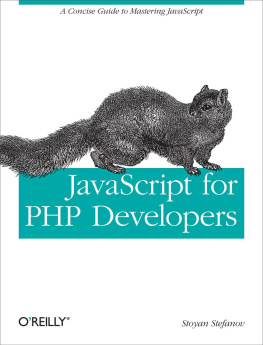this & Object Prototypes
Kyle Simpson
Foreword
Nick Berardi
nickberardi.com, @nberardi
While reading this book in preparation for writing this foreword, I was forced to reflect on how I learned JavaScript and how much it has changed over the last 15 years that I have been programming and developing with it.
When I started using JavaScript 15 years ago, the practice of using non-HTML technologies such as CSS and JS in your web pages was called DHTML or Dynamic HTML. Back then, the usefulness of JavaScript varied greatly and seemed to be tilted toward adding animated snowflakes to your web pages or dynamic clocks that told the time in the status bar. Suffice it to say, I didnt really pay much attention to JavaScript in the early part of my career because of the novelty of the implementations that I often found on the Internet.
It wasnt until 2005 that I first rediscovered JavaScript as a real programming language that I needed to pay closer attention to. After digging into the first beta release of Google Maps, I was hooked on the potential it had. At the time, Google Maps was a first-of-its-kind applicationit allowed you to move a map around with your mouse, zoom in and out, and make server requests without reloading the pageall with JavaScript. It seemed like magic!
When anything seems like magic, it is usually a good indication that you are at the dawn of a new way of doing things. And boy, was I not wrongfast-forwarding to today, I would say that JavaScript is one of the primary languages I use for both client- and server-side programming, and I wouldnt have it any other way.
One of my regrets as I look over the past 15 years is that I didnt give JavaScript more of a chance before 2005, or more accurately, that I lacked the foresight to see JavaScript as a true programming language that is just as useful as C++, C#, Java, and many others.
If I had this You Dont Know JS series of books at the start of my career, my career history would look much different than it does today. And that is one of the things I love about this series: it explains JavaScript at a level that builds your understanding as you go through the series, but in a fun and informative way.
this & Object Prototypes is a wonderful continuation to the series. It does a great and natural job of building on the prior book, Scope & Closures , and extending that knowledge to a very important part of the JS language, the this keyword and prototypes. These two simple things are pivotal for what you will learn in the future books, because they are foundational to doing real programming with JavaScript. The concept of how to create objects, relate them, and extend them to represent things in your application is necessary to create large and complex applications in JavaScript. And without them, creating complex applications (such as Google Maps) wouldnt be possible in JavaScript.
I would say that the vast majority of web developers probably have never built a JavaScript object and just treat the language as event-binding glue between buttons and AJAX requests. I was in that camp at a point in my career, but after I learned how to master prototypes and create objects in JavaScript, a world of possibilities opened up for me. If you fall into the category of just creating event-binding glue code, this book is a must-read; if you just need a refresher, this book will be a go-to resource for you. Either way, you will not be disappointed. Trust me!
Preface
Im sure you noticed, but JS in the book series title is not an abbreviation for words used to curse about JavaScript, though cursing at the languages quirks is something we can probably all identify with!
From the earliest days of the Web, JavaScript has been a foundational technology that drives interactive experience around the content we consume. While flickering mouse trails and annoying pop-up prompts may be where JavaScript started, nearly two decades later, the technology and capability of JavaScript has grown many orders of magnitude, and few doubt its importance at the heart of the worlds most widely available software platform: the Web.
But as a language, it has perpetually been a target for a great deal of criticism, owing partly to its heritage but even more to its design philosophy. Even the name evokes, as Brendan Eich once put it, dumb kid brother status next to its more mature older brother Java. But the name is merely an accident of politics and marketing. The two languages are vastly different in many important ways. JavaScript is as related to Java as Carnival is to Car.
Because JavaScript borrows concepts and syntax idioms from several languages, including proud C-style procedural roots as well as subtle, less obvious Scheme/Lisp-style functional roots, it is exceedingly approachable to a broad audience of developers, even those with little to no programming experience. The Hello World of JavaScript is so simple that the language is inviting and easy to get comfortable with in early exposure.
While JavaScript is perhaps one of the easiest languages to get up and running with, its eccentricities make solid mastery of the language a vastly less common occurrence than in many other languages. Where it takes a pretty in-depth knowledge of a language like C or C++ to write a full-scale program, full-scale production JavaScript can, and often does, barely scratch the surface of what the language can do.
Sophisticated concepts that are deeply rooted into the language tend instead to surface themselves in seemingly simplistic ways, such as passing around functions as callbacks, which encourages the JavaScript developer to just use the language as-is and not worry too much about whats going on under the hood.
It is simultaneously a simple, easy-to-use language that has broad appeal, and a complex and nuanced collection of language mechanics that without careful study will elude true understanding even for the most seasoned of JavaScript developers.
Therein lies the paradox of JavaScript, the Achilles heel of the language, the challenge we are presently addressing. Because JavaScript can be used without understanding, the understanding of the language is often never attained.
Mission
If at every point that you encounter a surprise or frustration in JavaScript, your response is to add it to the blacklist (as some are accustomed to doing), you soon will be relegated to a hollow shell of the richness of JavaScript.
While this subset has been famously dubbed The Good Parts, I would implore you, dear reader, to instead consider it the The Easy Parts, The Safe Parts, or even The Incomplete Parts.
This You Dont Know JS book series offers a contrary challenge: learn and deeply understand all of JavaScript, even and especially The Tough Parts.
Here, we address head-on the tendency of JS developers to learn just enough to get by, without ever forcing themselves to learn exactly how and why the language behaves the way it does. Furthermore, we eschew the common advice to retreat when the road gets rough.
I am not content, nor should you be, at stopping once something just works and not really knowing why . I gently challenge you to journey down that bumpy road less traveled and embrace all that JavaScript is and can do. With that knowledge, no technique, no framework, no popular buzzword acronym of the week will be beyond your understanding.
These books each take on specific core parts of the language that are most commonly misunderstood or under-understood, and dive very deep and exhaustively into them. You should come away from reading with a firm confidence in your understanding, not just of the theoretical, but the practical what you need to know bits.

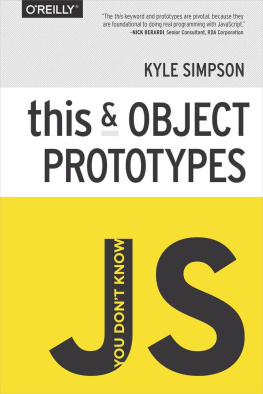
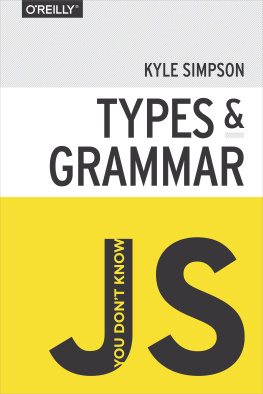
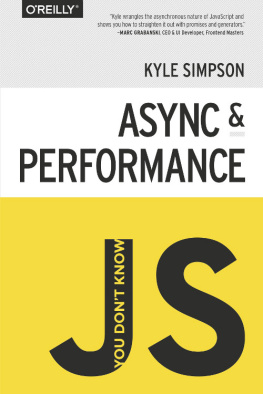
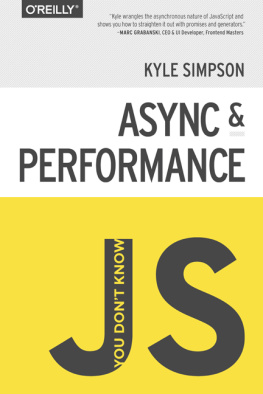
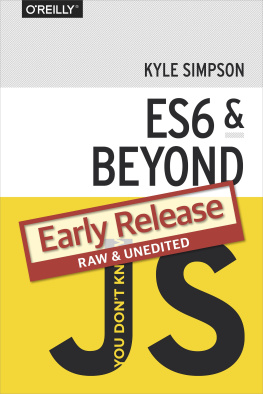
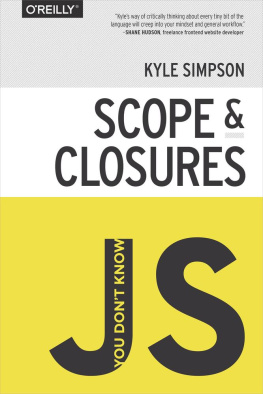
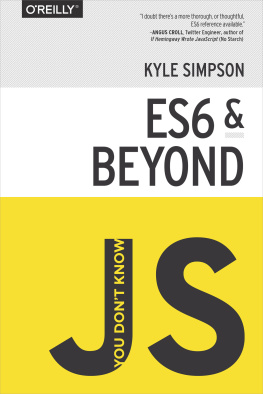

![Kyle Simpson [Kyle Simpson] - You Don’t Know JS: Up & Going](/uploads/posts/book/121420/thumbs/kyle-simpson-kyle-simpson-you-don-t-know-js.jpg)
![Rehan Zaidi [Rehan Zaidi] - JavaScript Essentials for SAP ABAP Developers: A Guide to Mobile and Desktop Application Development](/uploads/posts/book/120567/thumbs/rehan-zaidi-rehan-zaidi-javascript-essentials.jpg)



